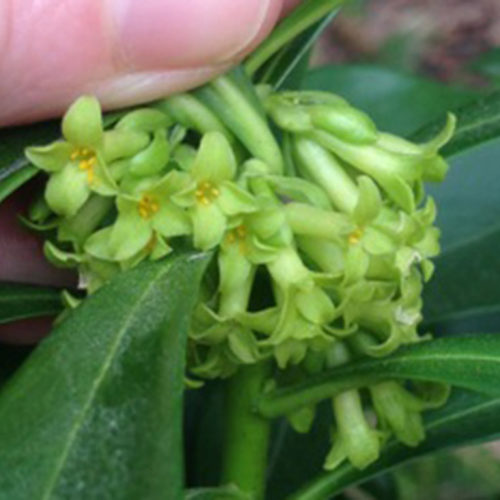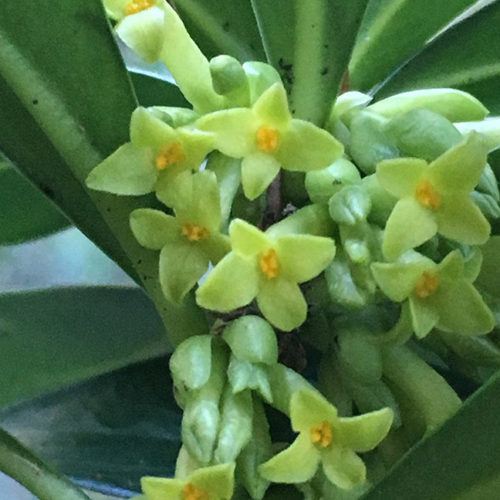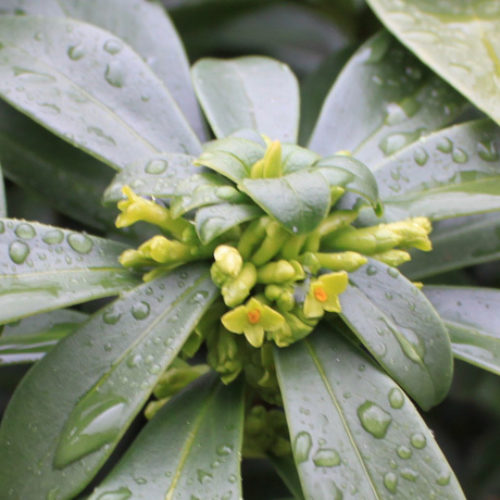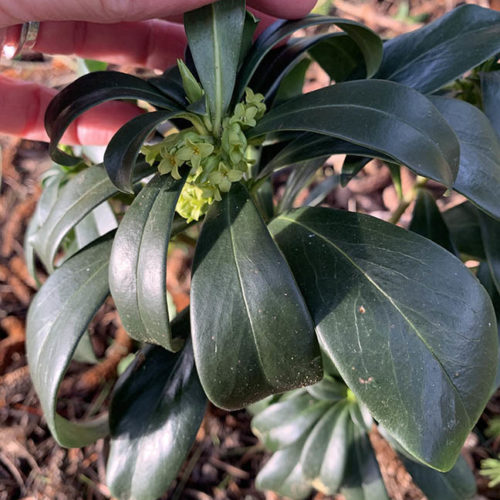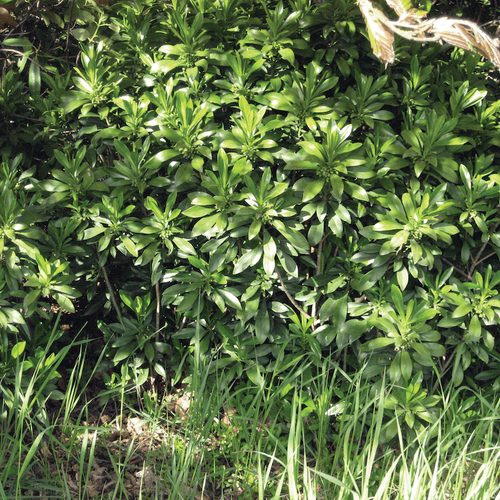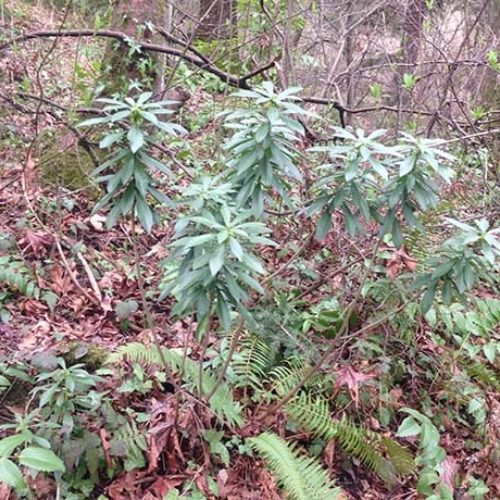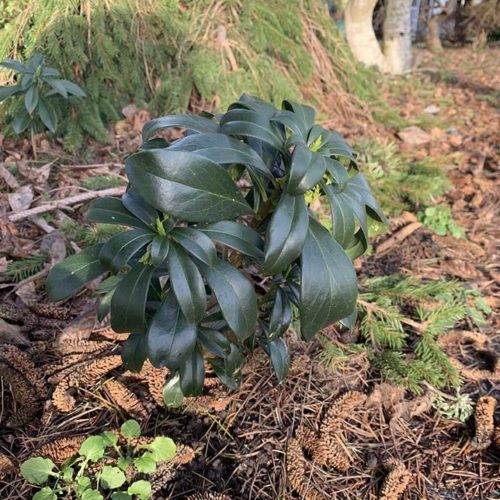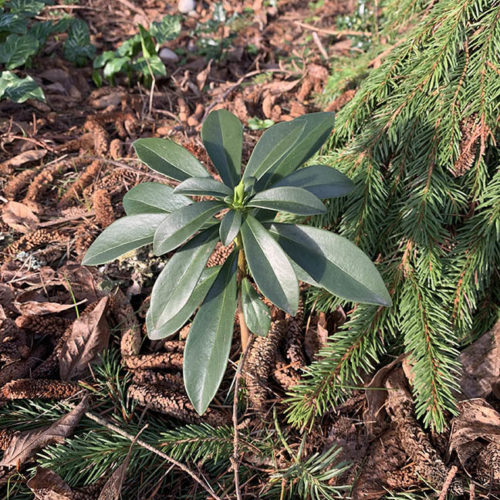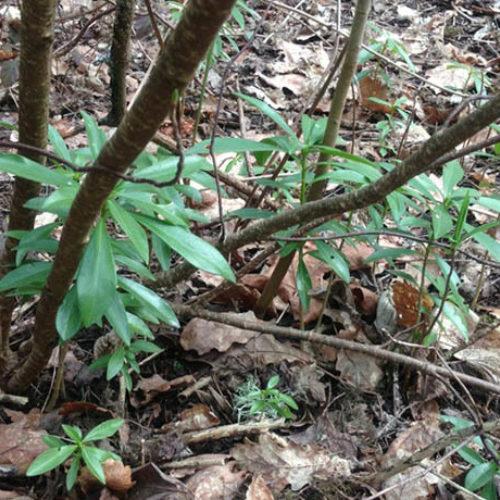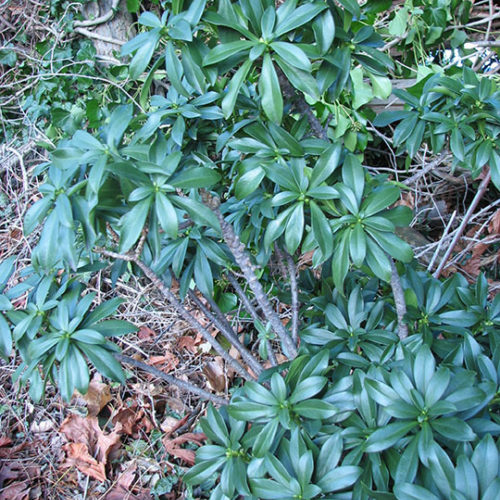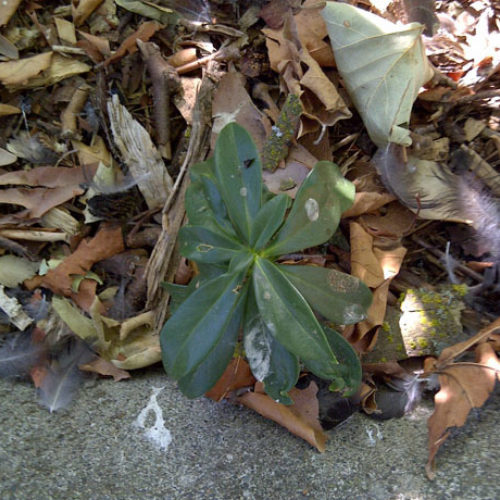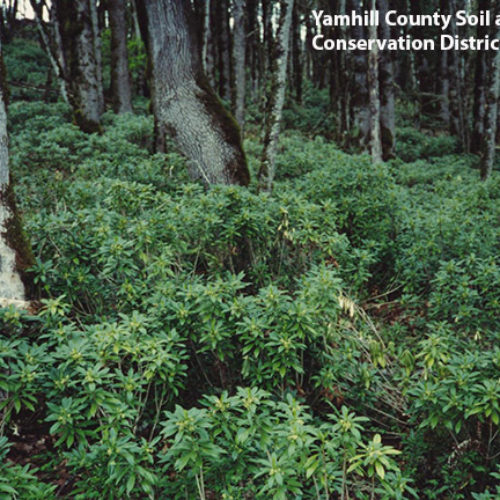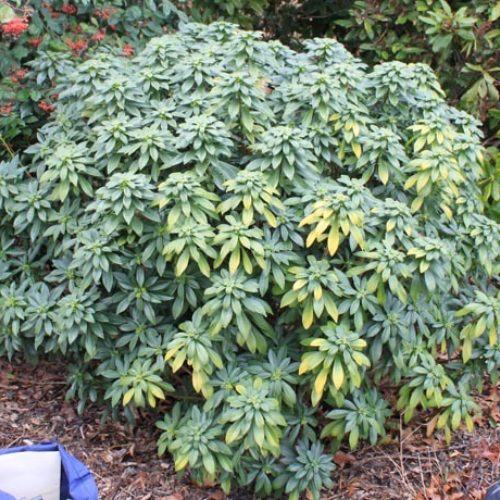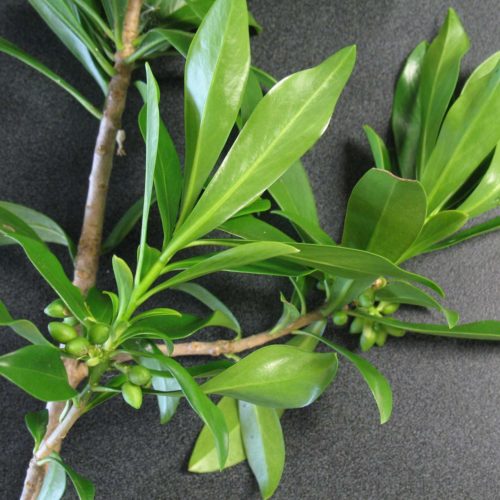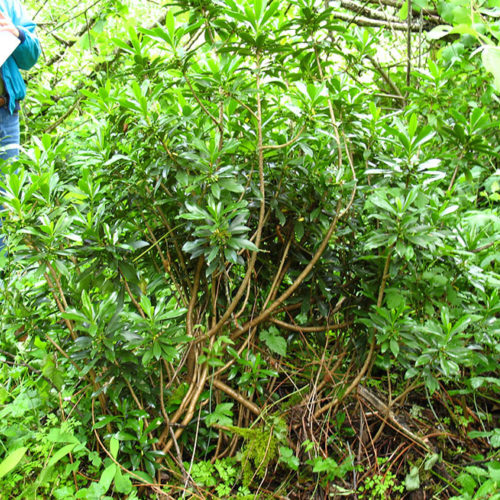Spurge Laurel
Daphne laureola
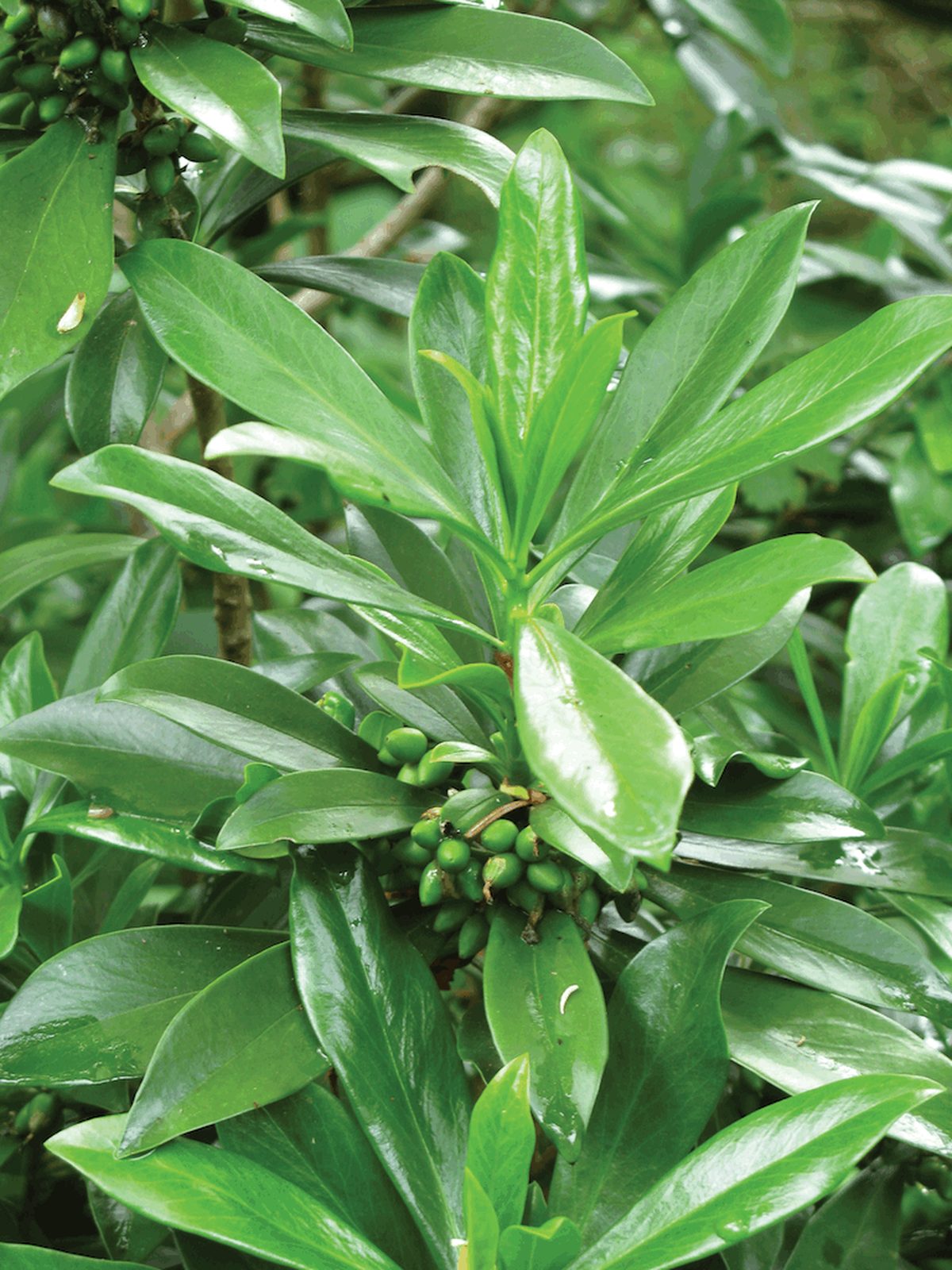
Family: Thymelaeaceae
Other Common Names: Daphne, Daphne spurge, Daphne-laurel, laurel-leaved daphne, olive-spurge, wood laurel, copse laurel
Weed class: B
Year Listed: 2007
Native to: Europe and Northern Africa
Is this Weed Toxic?:
humans, livestock
Legal listings:
This plant is also on the Washington State quarantine list. It is prohibited to transport, buy, sell, offer for sale, or distribute plants or plant parts of quarantined species into or within the state of Washington or to sell, offer for sale, or distribute seed packets of seed, flower seed blends, or wildflower mixes of quarantined species into or within the state of Washington. Please see WAC 16-752 for more information on the quarantine list. For questions about the quarantine list, contact the Washington State Department of Agriculture's Plant Services Program at (360) 902-1874 or email PlantServices@agr.wa.gov.
Why Is It a Noxious Weed?
It is considered problematic in garry oak and similar ecosystems in British Columbia. It has the ability to rapidly colonize areas forming monotypic stands and competing with native plants. All parts of the plant are highly toxic.
How would I identify it?
General Description
Spurge laurel is an evergreen shrub that grows to around 1.6 to 5 feet (0.5 to 1.5 meters) tall. The shrub habit can be upright or decumbent (arched at the base then spreading upward).
Flower Description
Flowers are small and very fragrant. Inconspicuous yellow-green flowers appear in clusters at the base of the leaves.
Leaf description
Leaves are alternate and abundant at shoot tips. They are narrowly oval, being wider above the middle and are between 0.8 to 5.1 inches long. Leaves are smooth, dark green, and shiny on the top. They are lighter in color underneath.
Stem description
Mature bark is gray with a yellow hue while young branches are green.
Fruit Seed Description
Fruit are little black berries with one seed and are poisonous.
Where does it grow?
Spurge laurel will grow in sun or shade and looks the best with some of both. Look for it in the forest understory. Please click here to see a county level distribution map of spurge laurel in Washington.
How Does it Reproduce?
Spurge laurel reproduces by seed, also can reproduce vegetatively through the production of root sprouts.
How Do I Control It?
General Control Strategy
Due to the irritating toxins in the sap, stem, leaves, and fruits, it is advisable to wear gloves and other protective gear when handling spurge laurel.
Mechanical Control
Hand pulling small infestations is effective. Larger shrubs that are too big to pull can be cut below soil line. Watch the area for resprouts and recut as needed. Also, try using a tool like a Weed Wrench, Extractigator, or Uprooter to leverage larger plants out of the ground, along with their roots. Check with your county noxious weed board to see if they have weed wrenches they can loan out.
Herbicide Control
Please refer to the PNW Weed Management Handbook, or contact your county noxious weed coordinator.
For More Information
See our Written Findings for more information about spurge laurel (Daphne laureola).
Thurston County NWCB Fact Sheet on spurge laurel
Whatcom County NWCB Fact Sheet on spurge laurel
Island County NWCB Fact Sheet on spurge laurel
Jefferson County NWCB Fact Sheet on spurge laurel
San Juan County NWCB Poster on spurge laurel
Control Options for spurge laurel from Whatcom County NWCB



